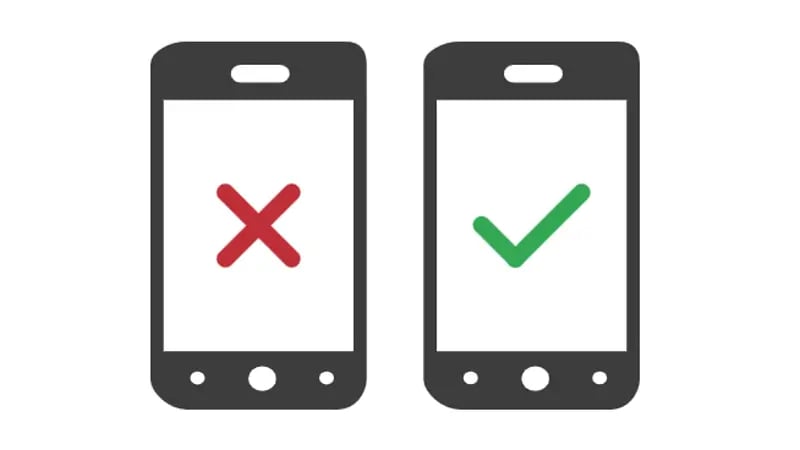Opportunities for Better A/B Testing
Any marketer around for a while will tell you that the classic A/B test is invaluable to any digital marketing campaign. They might not mention that this simple testing method can also be invaluable to your inbound strategy.
The term 'split test' is often used interchangeably with the A/B test. The two are, in fact, remarkably similar testing methods; however, they differ in one critical way—how much you change between variables.
-
In a split test, you change the entire content of your material (email, newsletter, blog post, landing page, etc.)
-
In an A/B test, you only change one aspect of one of those things (headline, subheadings, image, CTA button location, etc.)
We'll be using both terms today; however, we'll strive to use them in relation only to the appropriate type of test situation. Let's start with a more detailed description of these powerful testing techniques.
A/B and split testing defined
On the most basic level, an A/B test is intended to show you which version of your content your readers find more compelling. You'll have data on two versions of the content that you can compare. You'll see that one will have caused more people to click the button, call in, or give you their email address in exchange for an eBook, whatever the call-to-action is for the piece of content.
A/B testing in inbound marketing starts with tried and true content. Let's say you have this one blog post that resonates with your readers. It's got great click-through stats, it's been a consistent draw ever since you published it three months ago, and you're still promoting it via social media and Google ads (just an example; your promotion methods will vary).
Now you take that post, and you change one aspect. For our example today, let's say you change the position of the CTA button. It's been living happily at the bottom of the post for a while, so you create a second page with that button in the sidebar instead. Now you promote this version, B, of your content via the same outlets as the original variation, A. Now sit back and let the statistics accumulate.
Once you've run this second variation for a while, it's time to collect the data and compare side-by-side to see which one brought in more clicks (or views, conversions, or whatever you're looking to get from the content in question).
Congratulations, you just completed an A/B test!
Inbound marketing opportunities for A/B testing
We will look at five areas of an inbound marketing strategy where you might miss opportunities for A/B or split tests. Doing so will help you hone your content to bring in more clicks for less money, helping your bottom line and drawing in more potential customers.
1. Headlines
Never underestimate the power of the H tag. This applies to both the power of the tag to increase your SEO juice and the power of a catchy headline to pique readers' interest and keep them reading to the CTA.
For an A/B test, change up only your H1. As part of a split test, try changing up all of your headers and subheaders, plus maybe the title and CTA button color. The split version will likely cause a more significant variation in reader reactions; the issue is that you won't know which of the changes is responsible or if the combination of all of them worked.
As always, don't be tempted to use clickbait-y headlines; they will only cause readers to lose trust in you and your content.
2. Images
Another strikingly important aspect of any content marketing piece is your use of images. Featured images are often the first thing a potential reader sees in their RSS feed, on a search results page, or even in a promotion post on social media. This image needs to be unique, relevant, and attention-grabbing without being a distraction from the actual content.
Maybe you found two stock images you wanted to use for this particular post. Simple, A/B test time! Create two identical posts, one using each image, then promote them separately to the same audience. You'll quickly see which is catching readers' attention better, and you can eliminate the other and tailor your future image choices based on this information.
3. Post length
Search Engine Journal shows that ~1,500 words is the optimal blog post length for shares, reposts, and reader engagement. Split-test this with your readers by creating two versions of your content with varying lengths. Make the original 1,800 words, then edit that for variation B at ~800 words.
This will give you insights into your readers' preferences for just how much information they want to see simultaneously.
4. Opt-in/landing pages
This is more of a split test. Create separate opt-in forms for use on the same page. Maybe your form has ten fields right now, and you're seeing a fair number of bounces from it. Try making a second form with only six fields, then run it simultaneously with the original for 50% of the visitors to that page.
Landing pages can work similarly, create two landing pages with different layouts, headlines, etc. and direct the same promotion to each 50/50. Maybe offer your ebook on version A and a free 30-minute consultation on B.
This will tell you which layout leads to more engagements and click-throughs and will only cost you the time to develop the two pages and analyze the results. This is an excellent use of time and energy for the potential revenue gain.
5. Call-to-action buttons
The CTA is a critical part of any marketing campaign, and content marketing is no different. Test out bigger buttons, brighter colors, or smaller buttons and toned-down colors. Change the wording on the button itself or the location on the page. Each of these changes may lead to significantly more or less interaction.
Either way, you're gaining invaluable information about your readers that you can use to tailor your future content, leading to more engagement and less time, energy, and money investment.
Each of these aspects, and the testing you can do on them, will lead to data on your readers and potential customers that you can use to fine-tune your future content. You'll be able to draw in more people with less effort expended, and in no time, you'll see the results in more conversions, engagement opportunities, and revenue.
This content is also available in:
- German: Möglichkeiten für bessere A/B-Tests
- Spanish: Oportunidades para mejorar las pruebas A/B
- French: Possibilités d'améliorer les tests A/B
- Italian: Opportunità di migliorare i test A/B
- Romanian: Oportunități pentru îmbunătățirea testării A/B
- Chinese: 更好地进行 A/B 测试的机会








Leave a Comment